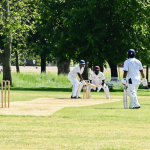A secondary school teacher’s experience of anti-racism
The author is a secondary teacher of many years who wishes to remain anonymous.
The summer term of 2020, still in lockdown due to the Covid-19 pandemic, was spent doing online learning as schools were still closed. We had got into a fairly good routine, albeit with online lessons. It is a school in the south of England, in a semi-rural location with a majority white teaching staff and pupil body. Not that anyone had particularly mentioned the ethnicity of the staff or pupil body before 2020. The summer of 2020 also saw the murder of George Floyd.
Within a couple of weeks, we had online assemblies, where we were told ‘to recognise our white privilege’ and that it was ‘not enough to be not racist, we had to be actively anti-racist’. People were also quoting from the Black Lives Matter organisation. When we returned to school in person in September 2020, still with Covid restrictions in place, there were yet more assemblies, again saying that we had ‘to recognise our white privilege’ and that it was ‘not enough to be not racist, we had to be actively anti-racist’. The non-white children were invited to give their accounts of race and racism as a step towards being ‘actively anti-racist’.
No thought was given as to how this would make children feel, focusing on the immutable characteristic of their skin colour. There was little attention to the particular impact on mixed-race children, where their white parent was essentially being pitted against their non-white parent as the inference in this form of anti-racism is that white equals perpetrator and non-white equals victim. The few members of staff who did question this were told that they were coming from a position of privilege with their whiteness and that they could not have a view, as it was not possible to experience racism in Britain as a white person.
The following year, the school then employed the services of Flair, a third-party organisation which provides race and ethnicity analytics and claims to show schools and other workplaces how and where racial bias is holding organisations back. The cost was high and we had to sign up for an extended period of time, where they could monitor the school’s progress in race equity. There were surveys for both students and staff to complete, where the questions were almost all composed of language fuelled with critical race theory terms, such as micro-aggressions and unconscious bias. Many of the questions were very leading such as: ‘How often are you personally witnessing racial micro-aggressions at school?’
Around the same time, a group was set up, exclusively for non-white pupils, to discuss issues pertaining to race. Any objections to a group to which membership was based solely on skin colour were dismissed as ‘we have to raise black voices/voices of people of colour’ and ‘as a white person, you are not able to experience racism’.
Within the same time period, heads of department have had to carry out curriculum overviews to highlight ‘gaps in diversity within their curricula’.
The results of the various Flair surveys and their recommendations included, but were not limited to: diversifying the staff and student body, integrating anti-racism into the school’s policies to understand race and bias, anti-racism workshops, specialist training for staff including on racial micro-aggressions and racial literacy.
At the beginning of the process, the staff were compliant, open to new ideas, and were quite naturally concerned about any potential racism and how to tackle it. However, as time has elapsed, there is now increasing concern about the language being used and promoted and the direction of travel of this approach.


